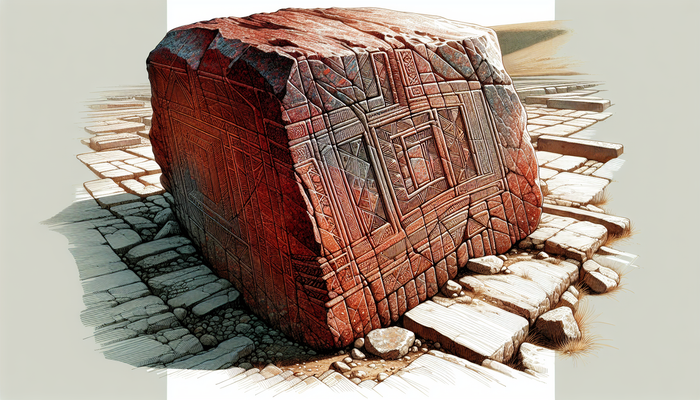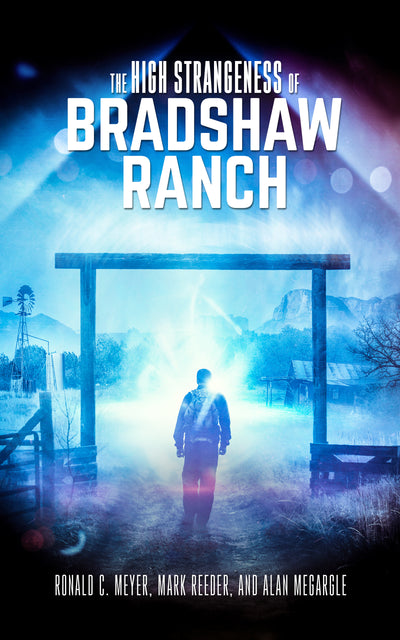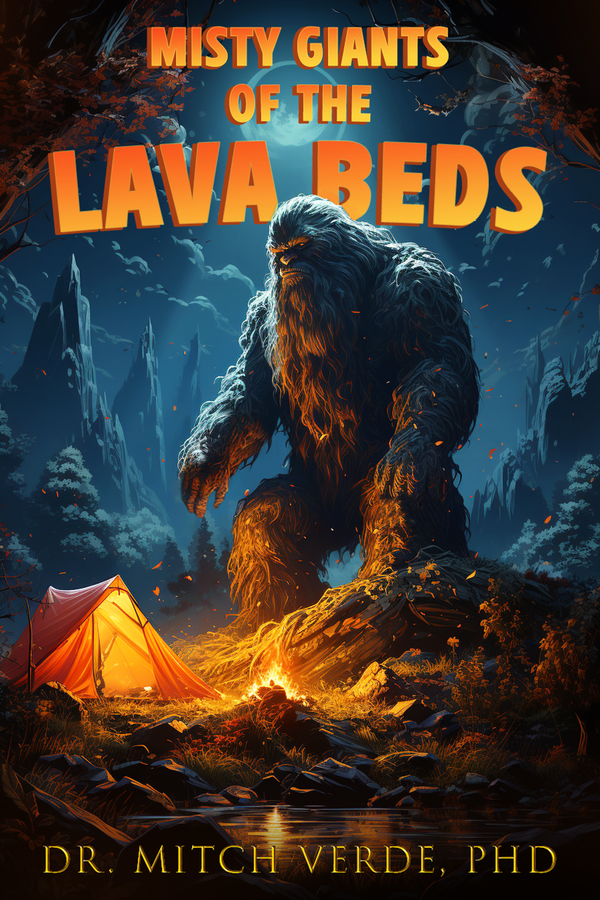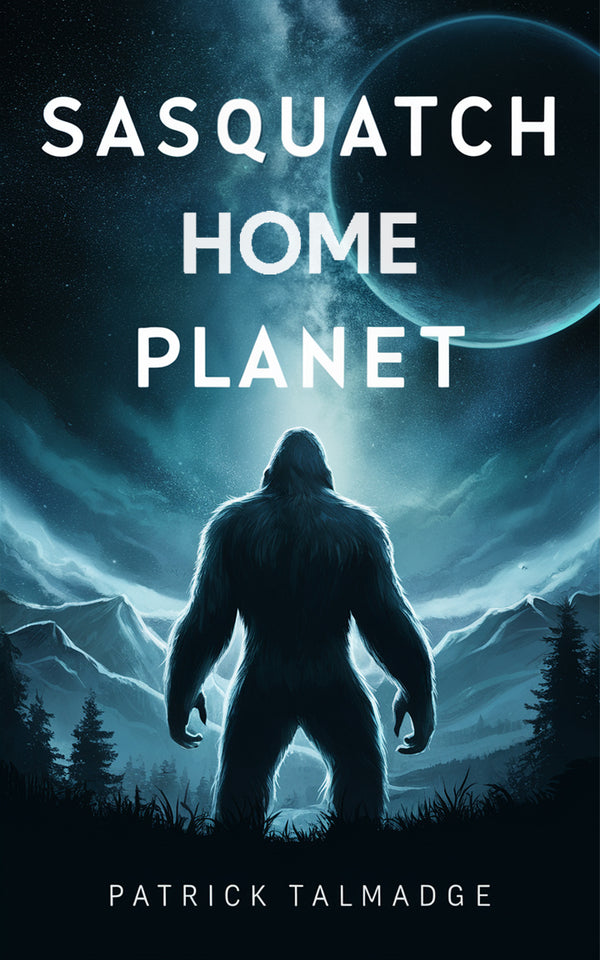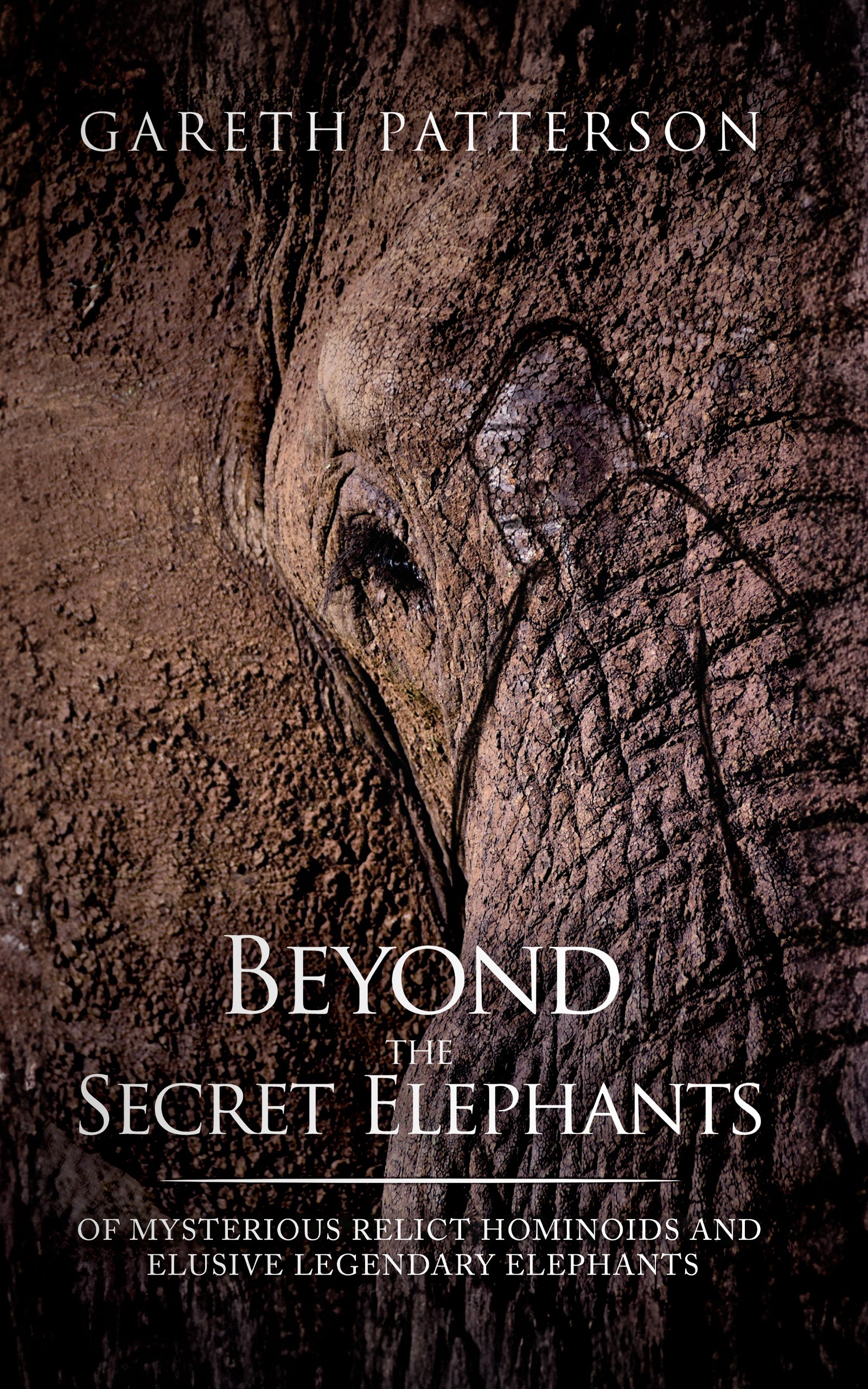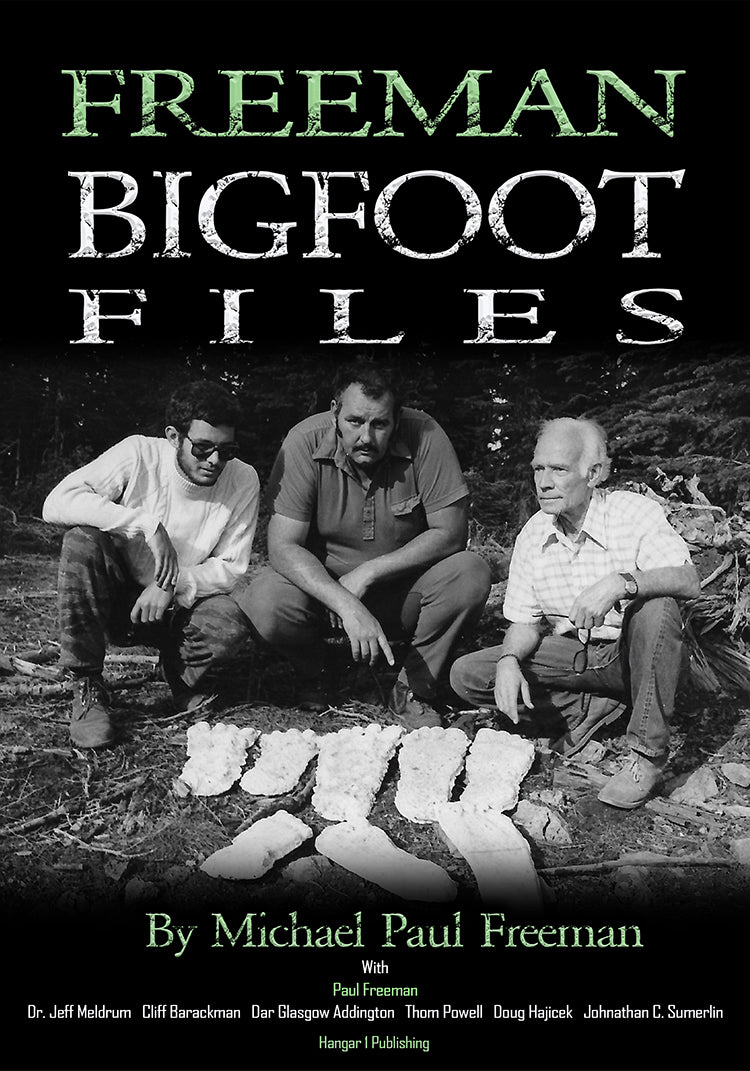Explore Striking Earth Mysteries

By Elaine Westfield, Ufologist
Imagine standing at the edge of the known world, peering into what lies just beyond our conventional understanding. What if the ground beneath your feet holds secrets whispered through millennia, pulsating with energies that defy straightforward explanation?
Earth mysteries represent a fascinating crossroads where spirituality meets history, geography intertwines with the unexplained, and ancient knowledge brushes against scientific inquiry. These aren't just folk tales or ghost stories – they form a rich tapestry of cultural and religious beliefs about our planet, often centered around specific locations considered historically or energetically significant.
"I've spent decades studying unusual phenomena, and what fascinates me most is how Earth mysteries occupy this unique space," says Dr. Marion Kepler, a geologist who's visited over fifty sites considered sacred in various traditions. "They're not quite science, not purely religion – they're this beautiful middle ground where wonder still reigns supreme."
What separates Earth mysteries from other disciplines is their nature – proponents view them as sacred and mythopoeic rather than strictly scientific. Yet many mysteries once dismissed by academia have later revealed surprising scientific truths. The magnetic anomalies at ancient sites, the unusual acoustics of certain stone circles, the geological wonders hidden in plain sight – these physical realities often form the foundation for deeper spiritual interpretations.
Our journey through Earth's most compelling mysteries will take us from the deepest human-made hole ever drilled to the haunting shipwrecks of the Black Sea; from glowing microscopic creatures in the ocean depths to massive geological formations visible only from space. We'll explore how Earth mysteries captured human imagination from the 17th century onward, venture into caves filled with crystals larger than houses, and examine the strange world beneath the Antarctic ice.
Along the way, I'll introduce you to ancient monuments, subterranean rivers, unexplained sounds that plague communities worldwide, and even a mysterious forest of bent trees that defies explanation. These aren't just curiosities – they represent our enduring quest to understand the remarkable planet we call home.
The Roots of the Unknown: Tracing the Lineage of Earth Mysteries
The story of Earth mysteries doesn't begin with New Age crystal shops or internet conspiracy theories. Its roots stretch back centuries to serious-minded antiquarians of the 17th century, particularly John Aubrey and William Stukeley. These men weren't fringe mystics – they were educated scholars fascinated by ancient monuments like Stonehenge.
Stukeley particularly stands out for his pioneering approach. He connected these mysterious stone circles with the druids, weaving together ancient sites and mythology to create what historians describe as an "idealized vision" of nature. His work represented an early attempt to make sense of landscape features that seemed deliberately placed or designed for purposes lost to time.
The modern chapter of Earth mysteries began in the 1920s when businessman and amateur archaeologist Alfred Watkins presented his theory of "ley lines" to the Woolhope Naturalists' Field Club. After noticing that many ancient sites in the British countryside seemed to align in straight lines across the landscape, Watkins proposed these were ancient trackways – trade routes connecting settlements and sacred sites. He outlined this theory in books like "Early British Trackways" (1922) and "The Old Straight Track" (1925).
The term "Earth mysteries" itself didn't emerge until around 1970, appearing in a publication called "The Ley Hunter." This journal served as a focal point for enthusiasts interested in ley lines and related phenomena during a revival of interest that began in the 1960s.
"The timing wasn't coincidental," explains cultural historian Dr. Emma Hayes. "This revival coincided with the counterculture movement, the growth of neopagan traditions like Wicca, and even the surge of interest in UFOs. People were questioning established narratives and looking for deeper meanings in the landscape."
The 1970s and 1980s saw Earth mysteries embraced and reinvented by the New Age Movement and modern paganism. What had begun as an archaeological curiosity transformed into a spiritual framework for connecting with the Earth. Books on the subject multiplied, discussing ley lines, Earth energies, archaeoastronomy, sacred landscapes, megalithic monuments, shamanism, and dowsing.
By the 1980s, the scope expanded dramatically beyond the British countryside. Earth mysteries became a global phenomenon, incorporating Chinese geomancy (feng shui), Western magical concepts like gematria, and various forms of dowsing. John Michell emerged as a pivotal writer during this period. His influential book "The View Over Atlantis" mixed ley lines with folklore and archaeology, popularizing these ideas as "Earth mysteries" and inspiring countless readers to view landscapes with new eyes.
The relationship between Earth mysteries and mainstream science remains complex. Academic archaeology generally ignores concepts like ley lines, particularly their more paranormal aspects. Organizations like the Committee for Scientific Investigation of Claims of the Paranormal (CSICOP) have extensively criticized researchers who support these interpretations.
Yet interestingly, the Earth mysteries movement embraced the term "ritual landscapes" that entered British archaeology in the 1980s. This term refers to sacred locations apparently used primarily for ceremonial purposes during the Neolithic period and early Bronze Age. While archaeologists use this concept differently, it shows how scientific and alternative approaches occasionally find common ground.
Today, Earth mysteries continue to drive tourism, creating what market researchers call the "landscape heritage" segment – people traveling specifically to experience sites believed to hold special energies or significance.
Beneath the Surface: Unraveling Earth's Interior Unknowns
Humans have always wondered what lies beneath our feet. Ancient myths placed everything from hell to hollow worlds under the Earth's crust. While we've moved beyond those specific ideas, the mysteries of our planet's interior continue to surprise even the most rigorous scientific minds.
The most ambitious attempt to physically explore Earth's depths was the Kola Superdeep Borehole near Norway's border. This Soviet-era engineering marvel remains the deepest hole humans have ever created, reaching an astonishing 12,262 meters (about 7.6 miles) by 1995. Yet for all this remarkable achievement, the borehole penetrated less than 0.2% of the distance to Earth's center.
"The temperature increased about 60 degrees Fahrenheit for every kilometer they went down," explains geophysicist Dr. Robert Schoch. "Eventually, the rock started to behave like plastic, gumming up their drills. There was so much pressure and heat that they simply couldn't go deeper."
Perhaps even more surprising was the discovery of living organisms where none should exist. At depths of about 2.5 kilometers, researchers found a whole new species of bacteria thriving in complete isolation – a hint of the vast microbial world hidden beneath our feet.
Before modern science, even serious thinkers had wildly different ideas about Earth's structure. In the late 17th century, Edmond Halley (of Halley's Comet fame) proposed that Earth might be hollow, consisting of concentric shells that could spin independently of each other. "When we think about Halley's theory," says physicist Dr. Michael Clark, "we forget that hollow Earth ideas were valid scientific thought. It wasn't just science fiction – it was the best explanation for the data they had."
While we now know Earth isn't hollow, Halley wasn't entirely wrong. Modern science has confirmed that our planet does indeed consist of distinct layers: the crust, mantle, outer core, and inner core. And in 2002, scientists discovered something even more surprising – the inner core has its own inner core, a giant ball of metal about 400 miles across with properties distinct from its surroundings.
How do we know all this without being able to visit these depths? Scientists analyze how earthquake waves move through the planet and bounce off different materials. These seismic waves act like a planetary MRI, revealing structures and boundaries deep underground. "You can sort of X-ray Earth with this method and see what's going on inside," explains Joseph Dwyer, professor of physics and astronomy.
One of the most stunning discoveries in recent years is what scientists call a "Subterranean Galapagos" – an enormous ecosystem teeming with microorganisms within Earth's crust. Researchers announced at a 2018 American Geophysical Union meeting that around 70% of all Earth's microbes dwell in this hidden world, far more than expected. The diversity of life in this underground realm may even exceed what exists on the surface.
"Our studies of deep biosphere microbes have produced much new knowledge, but also a realization and far greater appreciation of how much we have yet to learn about subsurface life," noted Rick Colwell, a microbial ecologist involved in the research.
The Earth's core holds even more surprises. In 2022, researchers from the U.S. Department of Energy's Advanced Photon Source used specialized technology to recreate the extreme conditions at Earth's center. Their findings suggest the core might function as a diamond factory. When carbon (which makes up about 90% of carbon on Earth) interacts with water and molten iron under tremendous pressure, it can transform into diamonds.
Scientists have also discovered that a rare form of helium gas – helium-3, created during the Big Bang – is escaping from Earth's core. "It's a wonder of nature," explains researcher Peter Olson, "and a clue for the history of Earth that there's still a significant amount of this isotope in the interior of Earth."
In 2022, the European Space Agency's satellite project Swarm revealed an entirely new type of magnetic wave sweeping the surface of Earth's outer core. This unprecedented ripple moves at 932 miles per year – much faster than scientists anticipated. "Geophysicists have long theorized over the existence of such waves," explained researcher Nicolas Gillet, "but they were thought to take place over much longer time scales than our research has shown."
The core of our planet remains largely unexplored, yet these glimpses reveal a dynamic, active world beneath our feet – one that may be far stranger than we ever imagined.
The Blue Frontier: Unexplained Phenomena in the Oceans and Seas
The oceans cover more than 70% of our planet's surface, yet we've explored less than 5% of their depths. These vast blue frontiers harbor some of Earth's most compelling mysteries – from strange navigation abilities to unexpected artistry and ancient survivors.
Few bodies of water pack as many mysteries into one place as the Black Sea. Often called "the largest inland body of water in the world" (though technically it connects to the Mediterranean), the Black Sea is larger than California and hides extraordinary secrets beneath its surface.
Its most unusual feature is its distinct vertical layers that don't mix. The upper layer contains fresher water from rivers, while the lower layer holds saltier water from the Mediterranean. Most remarkably, everything deeper than about 300 feet lacks oxygen entirely. Only certain bacteria can survive in these conditions.
This oxygen-free environment creates a perfect preservation chamber for shipwrecks. In 1995, explorers discovered intricate patterns on the seafloor – what some called the "oldest intact shipwreck known to humankind." Dating back 2,400 years, this ancient Greek trading vessel lies more than a mile beneath the surface with its mast, rudders, and rowing benches still in place.
"If the Titanic had sunk in these waters, we would have found it in much better state," notes one researcher, "not being eaten by nasty underwater microorganisms."
The Black Sea may also hold evidence of a catastrophic flood that some researchers link to the biblical story of Noah's Ark. The "Black Sea Deluge hypothesis" suggests that around 7,500 years ago, rising sea levels caused the Mediterranean to overflow into what was then a much smaller freshwater lake, rapidly flooding coastal settlements. Samples from the seabed show a sudden shift from freshwater to marine species, and underwater surveys have found what appear to be submerged human structures.
Local legends add another layer of mystery, speaking of underground tunnels stretching beneath the Black Sea from Romania and Bulgaria to Turkey. According to old chronicles, peasants once used these tunnels to move flocks of sheep. The entrances were supposedly sealed off for national security reasons, though canal workers reportedly discovered one in the 1980s.
The mysteries of the ocean extend to its inhabitants as well. Scientists have long puzzled over how sea turtles navigate across thousands of miles to return to the exact beach where they hatched. During mass nesting events like the arribada of Olive Ridley sea turtles in Costa Rica, up to half a million turtles arrive simultaneously on the same beach – a synchronization that remains poorly understood.
Similarly intriguing are the navigation abilities of sharks. At Malpelo Island, Colombia, hammerhead, silky, and whale sharks congregate in large numbers, some traveling thousands of miles to reach this spot. Researchers believe they may detect Earth's magnetic field through special organs in their broad noses, using the island as a magnetic landmark.
"Sharks rival any physics laboratory for sensing tiny electrical effects," explains one scientist, noting they can detect electrical signals as weak as one billionth of a volt – similar to the faint electrical signatures of prey hiding beneath sand.
In 2011, after a decade of mystery, scientists identified the creator of intricate patterns discovered on the seafloor near Japan's Amami Island. These geometric designs, about 6 feet in diameter, weren't made by aliens or underwater civilizations, but by a previously unknown species of pufferfish barely 3 inches long. The male fish spends over a week meticulously gathering fine sand to build an elaborate nest, decorating it with shell fragments and sand dollars to attract a mate.
The oceans also harbor living fossils – creatures that have survived virtually unchanged for hundreds of millions of years. The chambered nautilus predates dinosaurs by hundreds of millions of years. One of very few animals to survive five mass extinctions with little change, it uses its chambered shell to control buoyancy like a submarine, filling compartments with air extracted from seawater.
Horseshoe crabs, dating back 450 million years (twice as old as the oldest dinosaur), have barely changed in all that time. These remarkable creatures possess up to ten eyes plus dozens of photoreceptors on their tails. Scientists believe this extreme sensitivity to light helps them navigate to shorelines for breeding.
Perhaps most haunting is the unexplained "Tomb of the Lost Turtles" – a cave system in Malaysia filled with turtle remains. "After visiting in 1998, undersea explorer Jacques Cousteau likened it to a graveyard for African elephants," notes one source, "a place where they go to die." Unlike elephants, sea turtles aren't known to gather in death places, making this unique concentration of remains particularly mysterious.
Enigmatic Landscapes: Mysteries Etched on Earth's Surface
Walk the world's landscapes with open eyes and you'll find mysteries everywhere – circular patterns in desert sand, forests of bent trees, rocks that seem to move on their own, and sounds that haunt communities yet evade explanation.
Let's return to ley lines, those straight alignments of ancient sites that sparked modern interest in Earth mysteries. While skeptics dismiss them as coincidence, believers see these alignments as evidence of ancient knowledge or energy pathways across the landscape. Sacred sites like Stonehenge remain powerful focal points, drawing thousands of visitors seeking connection to something larger than themselves.
Across the globe, unusual stones and formations continue to puzzle researchers. In China, Mount Gandang periodically "lays eggs" – perfectly spherical stones that emerge from the cliff face every 30 years. Studies show these "eggs" have organic cores made of shells, plant remains, fish teeth, and skeletons, but their perfect roundness remains striking. Locals consider them sacred, with nearly every family in the nearby village keeping one in their home.
The Richat Structure in the Sahara Desert, visible from space, forms a perfect bull's-eye pattern nearly 30 miles across. Initially thought to be an asteroid impact crater, researchers now believe it resulted from an uplifted dome that eroded over millions of years. Yet questions remain about how this remarkable formation developed its concentric rings.
In Poland, the mysterious Crooked Forest contains about 400 pine trees with sharply curved trunks, all bending northward. Planted in the 1930s, these trees were somehow manipulated during early growth, though the purpose remains unknown. Theories range from deliberate human shaping for shipbuilding materials to snow pressure, but no definitive explanation exists. A small village near the forest might have held the answer, but it was destroyed over 70 years ago, taking its secrets along.
One of the most widespread yet elusive Earth mysteries is "The Hum" – a persistent, low-frequency sound heard by approximately 4% of people worldwide. First reported in Bristol, UK, in the 1970s, similar phenomena have been documented globally, most famously in Taos, New Mexico. Despite extensive investigation, scientists haven't identified a definitive source.
"I've interviewed dozens of people who hear The Hum," says acoustic researcher Dr. Glen MacPherson. "Their descriptions are remarkably consistent – a low, distant rumble or engine-like sound that intensifies at night. The suffering is real – insomnia, headaches, inability to concentrate. Yet when we bring in recording equipment, we often capture nothing unusual."
Theories about The Hum range from seismic activity and tectonic plates to submarine communication signals, industrial equipment, and even the cumulative noise of our technological civilization creating a background drone that some people can perceive. In Taos, local beliefs attribute it to mystical forces and bad spirits.
Earth's water features include equally mysterious phenomena. The Colombia River Caño Cristales appears unremarkable most of the year, but for a brief period transforms into a "liquid rainbow" displaying vibrant reds, yellows, greens, blues, and blacks. This occurs when the aquatic plant Macarenia clavigera blooms under precise water level and sunlight conditions.
In Death Valley, California, heavy stones weighing up to 660 pounds move across a dry lake bed, leaving trails behind them. This phenomenon puzzled scientists for decades until 2006, when researchers discovered the mechanism: when winter rains create a shallow lake, nighttime freezing forms thin ice sheets around the rocks. Morning winds then push these ice-buoyant rocks across the muddy surface, creating their mysterious trails.
The Namibian "fairy circles" – millions of circular barren patches spanning hundreds of miles – represent another enduring mystery. While some scientists attribute them to termite activity, others suggest they result from plants competing for scarce water. Local beliefs attribute them to the gods, or footprints of the gods, or poisonous dragon breath underground.
Not all mysterious landscapes are natural. The Island of the Dolls near Mexico City features trees decorated with hundreds of weathered, decaying dolls. After finding a drowned girl in a nearby canal, a local man began collecting and hanging dolls as a memorial. Over decades, the practice transformed the island into an eerie display that attracts curious visitors despite (or because of) its unsettling atmosphere.
Caves and the Subterranean Veil: Exploring Hidden Worlds
Caves have fascinated humans since prehistoric times, serving as both shelter and sanctuary, and often inspiring awe, fear, and spiritual reverence. Today, some of Earth's most spectacular mysteries lie hidden beneath the surface in these natural chambers.
Mexico's Crystal Cave (Cueva de los Cristales) might be the most extraordinary cave on the planet. Discovered by miners in 2000, it contains gypsum beams up to 36 feet long and weighing 55 tons – the largest natural crystals ever found. "Each column is made of gypsum," explains one guide. "Everything inside this cave is natural."
What makes this cave particularly mysterious is its extreme conditions. Temperatures reach 136°F with nearly 100% humidity – an environment so hostile humans can only visit briefly with special cooling suits and oxygen masks. Without protection, the lungs can fill with water from the saturated air, leading to fatal consequences. These same conditions helped create the massive crystals over hundreds of thousands of years.
"The water and warm air help form the crystals; humidity and temperature haven't changed for centuries, so these columns continue to grow even now," notes a researcher who's studied the formation.
Italy's Blue Grotto (Grotta Azzurra) on the island of Capri presents a different kind of wonder. Entering through a tiny opening barely large enough for a small boat, visitors emerge into a cavern illuminated by an otherworldly blue light. This magical effect occurs because sunlight enters through an underwater opening, refracting through the water to fill the cave with intense blue illumination.
New Zealand's Glowworm Caves offer yet another subterranean marvel. The ceilings shimmer with thousands of blue lights – not electric installations but living glowworms (Arachnocampa luminosa). These bioluminescent larvae create sticky threads to catch insects, using their blue glow to attract prey in the darkness. The effect resembles a starry night sky underground.
"I've visited dozens of caves worldwide," says speleologist Maria Gonzalez, "but nothing compares to the first time I saw those glowworms. It's like the Milky Way relocated underground."
In California, the aptly named Moaning Caverns produce eerie, human-like sounds as air and wind circulate through the passages. Adding to the mystery, explorers have discovered about 100 ancient human skeletons at the bottom of the main chamber. How they got there remains unexplained – did they fall accidentally, or was the site used for some unknown ritual purpose?
All these caves formed through similar processes over immense time periods. Rainwater absorbs carbon dioxide as it falls, creating a mild acid that slowly dissolves limestone or dolomite. Over thousands or millions of years, these small chemical reactions carve out massive chambers and passages. Within these spaces, water laden with minerals creates stalactites hanging from the ceiling and stalagmites building up from the floor – a helpful memory trick being that stalactites hold "tight" to the ceiling, while stalagmites "might" reach it someday.
What makes caves particularly valuable for Earth mysteries research is their isolation and stability. Cut off from the surface world, they preserve conditions and contents that might otherwise be destroyed by weather, development, or human interference. This makes them natural time capsules, offering glimpses into Earth's past and the life it once harbored.
Ancient Endeavors and Modern Enigmas: Humanity's Place in Earth Mysteries
Humans have always shaped the landscape, sometimes creating mysteries that perplex future generations. From ancient monuments whose construction techniques remain debated to modern structures that seem to defy conventional engineering, we've contributed our share to Earth's mysteries.
Easter Island (Rapa Nui) stands as one of the most iconic examples. Nearly 1,000 stone statues (moai) dot this remote Pacific island, some standing up to 33 feet tall and weighing 82 tons. How did the Rapa Nui people, with Stone Age technology, carve these massive figures and transport them miles across the island? Various theories propose the use of rope systems, wooden sledges, or rolling logs, but no consensus exists.
"What's often overlooked," notes archaeologist Sarah Bingham, "is that these statues weren't just artistic expressions. They represented ancestors watching over their communities. Each one has a name and story. The mystery isn't just how they were moved, but why this society invested such enormous resources in creating them."
The ancient city of Nan Madol in Micronesia presents another engineering puzzle. Built on coral islets connected by canals, this "Venice of the Pacific" consists of 92 artificial islands constructed from basalt columns weighing up to 50 tons. With no written records explaining how these massive stones were transported and positioned, local legends attribute the construction to twin sorcerers who used magic to fly the stones into place.
More recent human activities have created their own mysteries. In Turkmenistan, the Darvaza Gas Crater (nicknamed the "Gateway to Hell") has burned continuously since 1971. Soviet engineers accidentally collapsed a natural gas drilling site, creating a crater about 230 feet wide. Fearing the release of poisonous gases, they set it on fire, expecting it to burn out in weeks. Fifty years later, it's still burning – a spectacular and eerie human-made phenomenon visible for miles across the desert.
In Florida, Coral Castle stands as one of the 20th century's most perplexing construction mysteries. Edward Leedskalnin, a 5-foot-tall man weighing just 100 pounds, single-handedly quarried, transported, and erected more than 1,100 tons of coral rock between 1923 and 1951. He worked mostly at night and refused to let anyone observe his methods. The site includes precisely positioned stones weighing up to 30 tons, all reportedly moved and placed without heavy machinery.
"I have discovered the secrets of the pyramids," Leedskalnin claimed, never revealing his techniques. Theories range from simple leverage and pulley systems to more exotic explanations involving magnetic forces and antigravity – all fueled by the remarkable precision of his work and the fact that no one ever witnessed his construction methods.
Technology has both revealed and inadvertently created Earth mysteries. Google Earth allows armchair explorers to discover unusual features, like a massive cave entrance on Antarctica's King George Island or what appears to be a giant ship trapped in ice 100 miles from the Antarctic coast. Sometimes these discoveries have mundane explanations; other times they remain unexplained.
Occasionally, technology itself creates apparent mysteries through glitches or distortions. Images of New Baltimore, New York, once showed bizarre, distorted structures that some internet users interpreted as a "portal" or hidden facility. The explanation was far simpler – a technical error in rendering the satellite imagery.
Hidden and restricted locations contribute to our modern landscape of mystery. Site R (Raven Rock Mountain Complex) in Pennsylvania, buried 60 stories underground, serves as a government continuity facility but remains largely off-limits to public scrutiny. The Vatican Secret Archives, containing thousands of historical documents and artifacts, allows access only to selected scholars. North Sentinel Island in the Indian Ocean remains perhaps the most forbidden location, home to an uncontacted tribe that violently rejects all outside interaction.
"Human nature seems hardwired to create mysteries," observes cultural anthropologist Dr. Miguel Sanchez. "Where nature doesn't provide enough, we build, restrict, hide, or imagine them. There's something in us that needs the unknown – perhaps because it gives us new frontiers to explore."
The Edge of the Known: Scientific Mysteries on Earth and Beyond
Beyond specific locations and phenomena, Earth itself presents numerous scientific mysteries that challenge our understanding of the planet as a whole. These aren't just curiosities but fundamental questions about Earth's history, composition, and processes.
One basic yet profound mystery is where Earth's water came from. "Scientists think Earth was a dry rock after it coalesced 4.5 billion years ago," notes one researcher. The prevailing theory suggests an "interstellar delivery system" – asteroids rich in water ice bombarding the young planet. But with little rock evidence remaining from this early period, definitive answers remain elusive.
Equally puzzling is the history of oxygen in our atmosphere. Rocks reveal that oxygen levels "cruised up and down like a roller coaster" for 3 billion years before stabilizing around the Cambrian Period about 541 million years ago. While cyanobacteria are known to have pumped out oxygen as waste, the exact factors controlling these fluctuations remain debated. Understanding this history is crucial because atmospheric oxygen enabled complex life as we know it.
The beginning of plate tectonics – the engine driving mountain formation, volcanic activity, and continent movement – represents another major mystery. With most early evidence destroyed by the very process being studied, geologists struggle to determine when and how the Earth's crust began breaking into moving plates. Tiny mineral grains called zircons dating back 4.4 billion years suggest continental-like rocks already existed then, but whether true plate tectonics operated remains controversial.
"Earth mysteries aren't just about strange lights in the sky or unexplained structures," says geophysicist Dr. Maria Torres. "Some of the biggest mysteries involve basic questions about our planet that we still can't fully answer."
The 1908 Tunguska Event exemplifies a dramatic Earth mystery with a likely explanation but missing conclusive evidence. On June 30, 1908, something exploded over Siberia with the force of 1,000 Hiroshima bombs, flattening 80 million trees over 830 square miles. Most scientists believe an asteroid or comet exploded in the atmosphere, but with no impact crater or significant fragments recovered, details remain contested.
Animal migration presents biological mysteries that continue to baffle researchers. Monarch butterflies travel thousands of miles to the same wintering grounds each year. Arctic terns fly from pole to pole annually, covering 44,000 miles. Sea turtles return to their hatching beaches decades later. How these creatures navigate with such precision, often to places they've never been before, remains only partially understood, with theories involving magnetic field detection, celestial navigation, and genetic programming.
Even apparently simple physical phenomena can defy complete explanation. The Mpemba Effect, where hot water freezes faster than cold water under certain conditions, was noted by a Tanzanian high school student in 1963 but still lacks comprehensive scientific understanding. Theories involve convection, evaporation, and hydrogen bonding dynamics, but no single explanation satisfies all observations.
Turbulence – the chaotic, unpredictable movement of fluids – has resisted complete mathematical description since Leonardo da Vinci first observed its complexity in the 15th century. Despite being governed by well-established equations of fluid dynamics, turbulence behavior at all scales remains partially unpredictable.
Ball lightning, a rare atmospheric phenomenon appearing as luminous, spherical objects during thunderstorms, continues to puzzle scientists despite various hypotheses involving electrical discharges, plasma, and quantum phenomena. Its fleeting nature makes systematic study extremely difficult.
"What I find most humbling," reflects physicist Dr. James Whitaker, "is how much we still don't understand about everyday things. We can detect gravitational waves from colliding black holes a billion light-years away, yet we can't fully explain why hot water sometimes freezes faster than cold water or predict exactly how cream will swirl in your coffee. Earth still holds profound mysteries at every scale."
The quest to predict earthquakes represents perhaps the most practically important Earth mystery. Despite decades of research, seismologists cannot forecast exactly when a fault will slip. Statistical models can estimate probability, similar to weather forecasts, but precise prediction remains elusive. Even a major experiment at Parkfield, California, missed its target by 12 years – the predicted earthquake finally struck in 2004 instead of 1994.
"One of the biggest hurdles," explains a geologist, "is that we still don't understand why earthquakes start and stop." This knowledge gap underscores a humbling truth – for all our technological advancement, fundamental aspects of our planet's behavior continue to elude our full understanding.
Exploring Further: Pathways to Deeper Understanding
Earth mysteries invite multiple paths of exploration. Scientific investigation through geology, archaeology, and atmospheric science continues to reveal surprising complexities. Alternative approaches like dowsing, personal experience, and spiritual connection offer different but complementary perspectives. Both have value in developing a holistic understanding of our remarkable planet.
For those interested in tangible experiences, many locations mentioned throughout this article welcome visitors. The glowworm caves of New Zealand, the fairy circles of Namibia, the Darvaza Gas Crater in Turkmenistan, the mysterious bent trees of Poland's Crooked Forest – these and many other sites allow personal encounters with Earth's mysteries.
Scientific research continually sheds new light on long-standing questions. Studies of Blood Falls in Antarctica, for example, not only explained its striking red color but also provided insights applicable to the search for life on Mars. As ocean exploration technologies advance, previously unknown species and ecosystems emerge from the depths. Each discovery answers some questions while raising new ones.
Regardless of scientific explanation, the stories, folklore, and spiritual significance attached to Earth's mysterious places add richness to human experience. When we stand at Stonehenge at dawn, witness the glowing plankton on a Maldivian beach, or hear the moaning sounds echoing through California caverns, we participate in a tradition of wonder that stretches back to our earliest ancestors.
Earth mysteries remind us that our planet is not a solved equation but an ongoing journey of discovery. As technology advances and our understanding grows, new mysteries inevitably emerge – a testimony to the complexity and wonder of the world we inhabit.
"The day we think we've explained everything," remarks Dr. Torres with a smile, "is the day we've stopped paying attention."
From Bigfoot to UFOs: Hangar 1 Publishing Has You Covered!
Explore Untold Stories: Venture into the world of UFOs, cryptids, Bigfoot, and beyond. Every story is a journey into the extraordinary.
Immersive Book Technology: Experience real videos, sights, and sounds within our books. Its not just reading; its an adventure.



